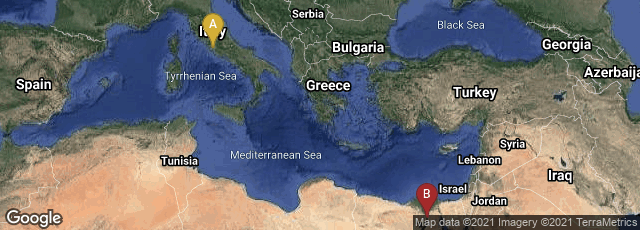
A: Roma, Lazio, Italy, B: Giza Governorate, Egypt
The discipline of papyrology, or the study of ancient papyri, originated in 1788 when "Danish classicist Niels Iversen Schow published a Greek papyrus that recorded a series of receipts for work performed in 193 CE on the irrigation dikes in the Fayum district of Egypt. The papyrus itself, a roll with twelve and a half surviving columns, had been bought in 1778 near Memphis by an anonymous merchant. As legend has it, the merchant bought only this one papyrus of the fifty offered for sale; 'the Turks' proceeded to burn the rest, delighting in the resulting aroma. Details of the story, especially its olfactory coda, have been contested, but it is certain that the papyrus that escaped destruction was donated to Cardinal Stefano Borgia. Hence, it is sometimes known as the Charta Borgiana, but it is also called the Schow papyrus after its editor. . . . Initially housed in the Cardinal's museum at Velitri, it now resides in the Museo Nationale Archeologico in Naples" (Keenan, "The History of the Discipline," Bagnall (ed) The Oxford Handbook of Papyrology [2009] 59-60).
Schow, Charta Papyracea Graece Scripta Musei Borgiani Velitris Qua Series Incolarum Ptolemaidis Arsinoiticae in Aggeribus Et Fossis Operantium Exhibetur . . . (Rome, 1788).